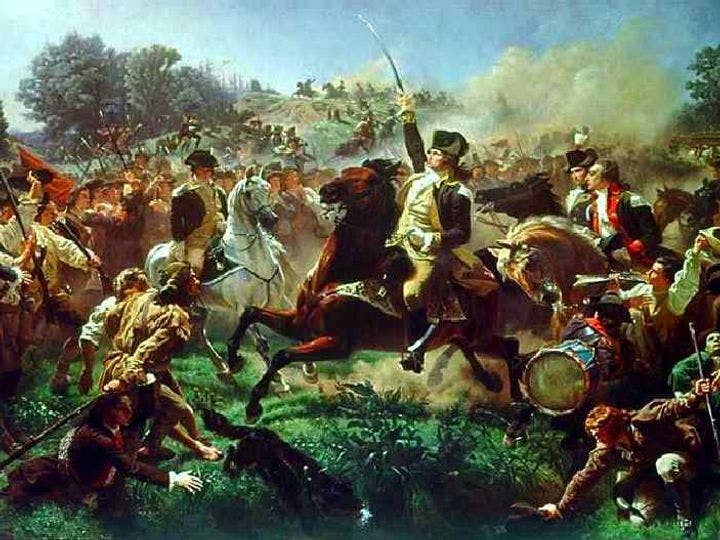Spring 2009
The First Civil War
– The Wilson Quarterly
The American Revolution may be more accurately viewed as a series of local civil wars.
The American Revolution was not a simple matter of downtrodden colonists rising up as one against their British oppressors. Revolutionary fervor was a minority sentiment. President John Adams later estimated that the population split into thirds: one-third loyalist, one-third revolutionary, and one-third neutral. Throughout the colonies, neighbor was pitted against neighbor in a series of local civil wars.
An analysis of thousands of records in a single New Jersey county by historian Michael S. Adelberg has produced a somewhat different picture of the split, with considerably more residents trying to be neutral than Adams estimated, some of them “trimmers” or “flip-floppers” who changed sides during the course of the conflict. Among the committed, supporters of the Revolution outnumbered Loyalists in Monmouth County, a relatively prosperous jurisdiction of about 12,500 people along the Atlantic coast. It was a military frontier, only nominally under patriot control, and close enough to British encampments that Loyalists had ready access to supplies and sanctuaries. The last great battle of the war in the North was fought at Monmouth Courthouse in 1778, when a British general marched his troops and their 12-mile-long baggage train across the county to reach the safety of New York. After a dramatic battle waged inconclusively in 100-degree heat, the British escaped under cover of night, but the colonists had fought them to a standoff.
Throughout the war, Adelberg found, the county’s population was split, with 1,933 individuals favoring the insurgency and 1,622 supporting British rule—a division only slightly greater in percentage terms to that between Barack Obama and John McCain in the 2008 election. Another 2,910 persons were neutral, switched sides, or left no records, stories, or s women, and almost nothing is known about those of its 1,000 African Americans.
Antagonism between Americans contributed substantially to the cost of the war. Monmouth County’s Joshua Studson was among those who paid dearly, but he did not die at the hands of the British. A successful privateer who captured three British ships, Studson was shot and killed in a militia boat in 1780 as he pursued a party of his own countrymen who had remained loyal to King George III.
Adelberg’s statistical research in the Monmouth historical archives revealed that nearly one local man in five suffered direct, serious effects from the conflict. Of the 5,466 men for whom Adelberg could find records, 143 were killed, 77 wounded, and 332 captured. Another 372 lost property and 379 were punished in the legal system. Twice as many Loyalists suffered as patriots.
* * *
THE SOURCE: “An Evenly Balanced County: The Scope and Severity of Civil Warfare in Revolutionary Monmouth County, New Jersey” by Michael S. Adelberg, in The Journal of Military History, Jan. 2009.
Image courtesy of Wikimedia Commons
